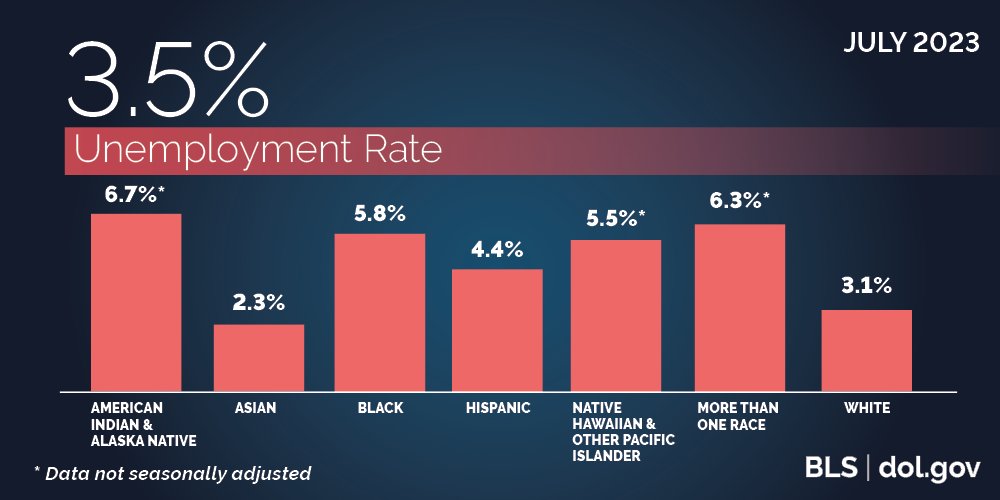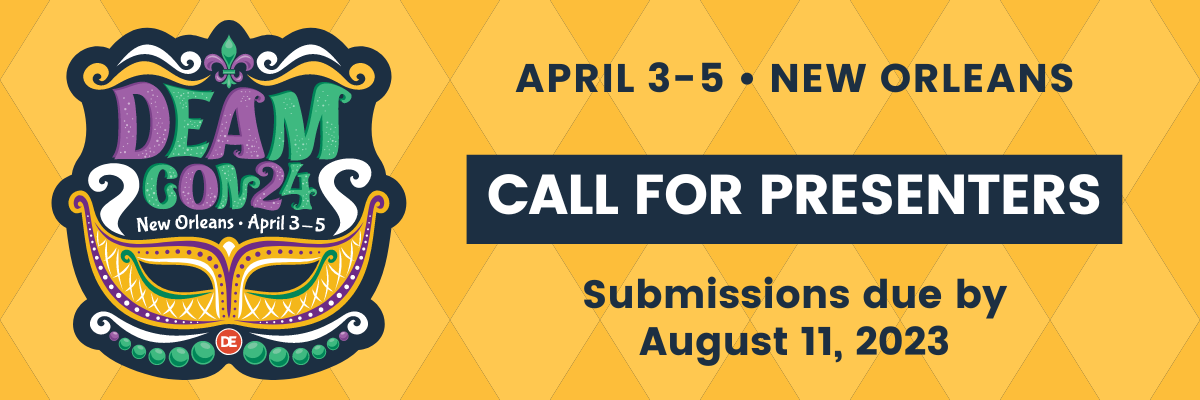
- JOLTS Report – Job Openings Decreased by 34k in June, Rate Steady at 5.8%
- U.S. NLRB Adopted a Stricter Standard for Employers to Justify Workplace Rules
- OFCCP Announced “Pre-Enforcement Notice & Conciliation Procedures” Final Rule Ending Agency Transparency in Audits And Clear Expectations
- U.S. I.C.E. Proposed New I-9 Remote Document Examination Pilot & Information Collection for Non-E-Verify Participants
- Economy Added Only 187k New Jobs in July, Unemployment Rate Nonetheless Down Slightly to 3.5%
- Breaking News Brief – EEOC Announced Proposed Regulations to Implement PWFA
- In Brief
- Looking Ahead: Upcoming Date Reminders
Tuesday, August 1, 2023: JOLTS Report – Job Openings Decreased by 34k in June, Rate Steady at 5.8%
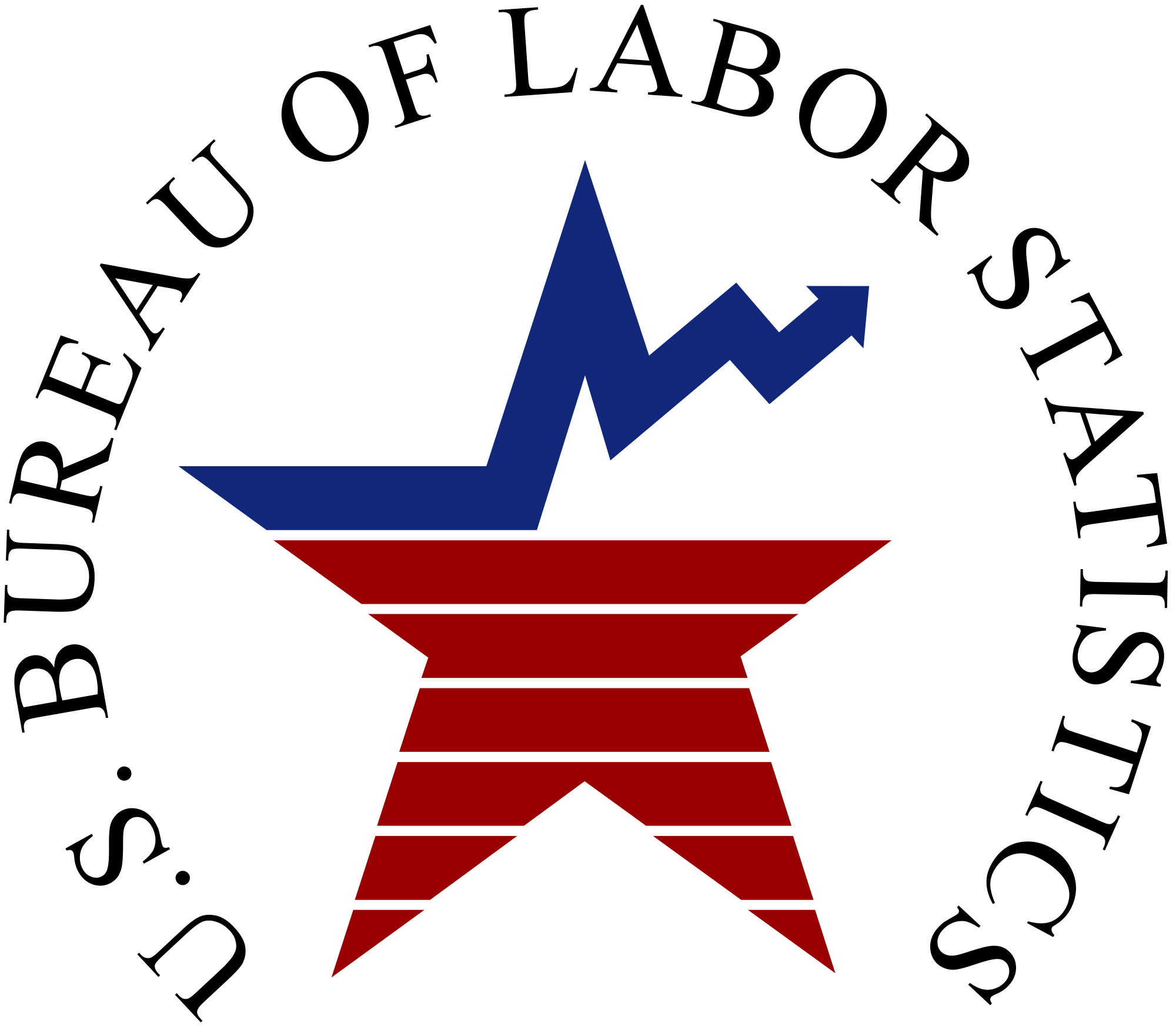
Note: The “jobs opening rate” compares the number of unfilled jobs with the number of all jobs in the U.S. marketplace (both filled and unfilled). This comparison thus measures the number of unfilled jobs against the total capacity of the marketplace for jobs. An increasing “jobs opening rate” signals a growing labor market. Since the jobs opening rate remained steady at about 5.8% in June, the jobs market had not grown (or shrunk) significantly since May.
In June, job openings increased in health care and social assistance (+136,000) and in state and local government, excluding education (+62,000). Job openings decreased in transportation, warehousing, and utilities (-78,000), state and local government education (-29,000), and the federal government (-21,000).
Hires, Total Separations, Quits & Layoffs/Discharges Down, Other Separations Up
The number of hires in June was only 5,905,000 (3.8 percent rate) compared to the adjusted 6,231,000 number (4.0 percent rate) for May (-326,000). So, in June, the nation saw about 1/3rd of a million fewer hires than in May. Notable June hiring decreases occurred in durable goods manufacturing (-54,000) and in finance and insurance (-54,000).
Total separations were only 5,637,000 (3.6 percent rate) for June, compared to 5,925,000 (3.8 percent rate) for May (-288,000). Within separations, quits in June were 3,772,000 (2.4 percent rate) down from 4,067,000 (2.6 percent rate) in May (-295,000) as more employees decided to hang onto their current jobs. June quits decreased in several industries, with the largest decreases in retail trade (-95,000), health care and social assistance (-75,000), and construction (-51,000). The number of quits increased in arts, entertainment, and recreation (+20,000).
Layoffs and discharges in June were 1,527,000, down a bit from 1,546,000 in May (-19,000). The percentage rate remained steady at 1.0%. Layoffs and discharges increased in professional and business services (+112,000) but decreased in durable goods manufacturing (-26,000) and in wholesale trade (-26,000).
The number of other separations was 339,000 in June, up a bit from 313,000 in May (+26.000) The percentage rate remained steady at 0.2%.
BLS posted interactive graphs here.
Three-Month Comparison Chart of Job Openings vs Jobs Filled
Our below table of available jobs data, as revised (taken from the revised JOLTS reports), shows a trend line of available jobs shrinking over the last four months. The U.S. labor economy is gently winding down under the pressure of Federal Reserve efforts to force reduced hiring (by raising interest rates to slow corporate growth and expansion) to in turn help reduce rising inflation:
| Reports | March | April | May | June |
| JOLTS available jobs
Prior/mo. comparison |
9,745,000
(229,000 < February*) |
10,320,000
(575,000 > March) |
9,616,000
(704,000 < April) |
9,582 000
(34,000 < May) |
*February Job Openings were 9,974,000
Note: BLS plans to release the JOLTS Report for July 2023 on Tuesday, August 29, 2023.
Wednesday, August 2, 2023: U.S. NLRB Adopted a Stricter Standard for Employers to Justify Workplace Rules
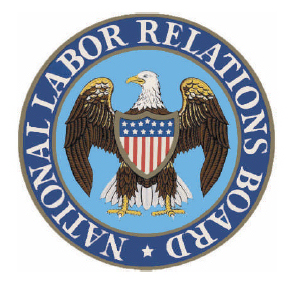
Section 8(a)(1) makes it an unfair labor practice for an employer to interfere with, restrain, or coerce employees in the exercise of the rights guaranteed in Section 7 of the NLRA. Section 7 includes the right to form a union, the right of employees to bargain with their employer over the terms and conditions of employment, and the right to join together in other ways for their mutual aid and protection. The NLRB’s new standard narrows the permissible range of operation of employer work rules. The Trump-era standard had provided more flexibility for employers.
What is the New Standard?
Work rules that do not expressly restrict employees’ protected concerted activity under Section 7 may still violate Section 8(a)(1). With its 3-1 decision in Stericycle Inc., the NLRB adopted a new standard that allows the Board’s General Counsel to prove only that a challenged rule has a “reasonable tendency” to chill employees from exercising their rights. If the General Counsel can prove up such “a reasonable tendency,” then the employer’s work rule is presumptively unlawful. However, the employer may rebut the presumption by proving that the rule advances a legitimate and substantial business interest and that the employer is unable to advance that interest with a more narrowly tailored rule. If the employer proves its defense, then the work rule will be found lawful to maintain.
How We Got Here
In 2017, the Board established a standard to analyze the lawfulness of employer work rules in Boeing Co., (365 NLRB No. 154), which it later refined in LA Specialty Produce Co., (368 NLRB No. 93 (2019)). Under that standard, the NLRB considered certain categories of work rules – such as investigative-confidentiality rules, non-disparagement rules, and rules prohibiting outside employment – as always lawful. That standard also used a balancing test to evaluate work rules that do not expressly restrict employees’ protected concerted activity. That balancing test considered both the nature and extent of the potential impact on NLRA rights and the employer’s legitimate justifications associated with the work rule.
In January 2022, the NLRB sought public input on whether it should change the Trump-Era standard. (See our story here.)
New Standard Rejects Trump-Era Approach, Expands on 2004 Ruling
With the new standard adopted Wednesday, the Board majority rejected the categorical approach of Boeing in favor of case-specific consideration of work rules. “Boeing gave too little consideration to the chilling effect that work rules can have on workers’ Section 7 rights,” asserted NLRB Chairman Lauren McFerran in a statement. “Under the new standard, the Board will carefully consider both the potential impact of work rules on employees and the interests that employers articulate in support of their rules,” she added.
According to the majority, the new standard builds on and revises the standard set forth in Lutheran Heritage Village-Livonia (343 NLRB 646 (2004)). There, the Board held that an employer simply having a neutral work rule violated Section 8(a)(1) if employees would reasonably construe the rule to prohibit union and other protected concerted activity.
Kaplan’s Dissent Viewed Majority’s Ruling as Failure to Strike Required Balance Between Interests
Objecting to the 15-page majority decision, Marvin Kaplan, the sole Board Republican, wrote a 17-page dissent asserting that the new standard abandoned the Board’s obligation to strike an appropriate balance between employee rights and legitimate employer interests.
Thursday, August 3, 2023: OFCCP Announced “Pre-Enforcement Notice & Conciliation Procedures” Final Rule Ending Agency Transparency in Audits And Clear Expectations
Discrimination settlement negotiations now expected to return to “Pig-in-a-Poke” poker game-style bluffing sessions

What did contractors lose with OFCCP’s gutting of the 2020 PDN Rule?
The 2020 PDN Rule had been one of the most important reforms of OFCCP audit procedures that occurred during the Trump Administration. The Rule was perhaps the cornerstone of the Trump OFCCP’s reforms seeking to bring transparency and predictability of OFCCP enforcement actions to federal contractors undergoing audits spiked with OFCCP claims the contractor unlawfully discriminated. The 2020 Rule fostered transparency to contractors by requiring OFCCP to provide information to them as to the factual and legal basis(es) for any claim OFCCP put forward alleging that the contractor had engaged in unlawful discrimination.
Second, OFCCP’s disclosure had to be sufficiently detailed to not only put the contractor on specific notice of the facts supporting each element of proof OFCCP claimed it could prove in support of one or more legal theories of unlawful discrimination, but also with sufficient detail and underlying data to allow the federal contractor to replicate OFCCP’s statistical and evidentiary analyses leading to the agency’s conclusion that the contractor had engaged in unlawful discrimination.
The now rescinded 2020 PDN Rule had also fostered predictability by defining for both OFCCP and for the federal contractor undergoing the audit how OFCCP would interpret key discrimination terms set out in OFCCP’s regulations. Those Rules at 41 CFR 60-1.3 only generally outline OFCCP’s requirements to go forward with what OFCCP’s Rules refer to as “qualitative” and “quantitative” evidence of unlawful discrimination. (Scroll down to the “Q” section of OFCCP’s alphabetical list of definitions pertaining to its Rules.)
With the demise of the central guts of the 2020 PDN Rule, federal government contractors are now back to being forced to guess at what proof, what data and what analyses have concerned OFCCP and what discrimination law claim the agency believes these secret elements of proof support.
Many leaders of the Affirmative Action federal contractor community immediately privately decried the new Rule. All worried that OFCCP audits would return to the “bad old days” of the Obama OFCCP in which audits were like poker games with federal contractors guessing what “cards OFCCP held in its hand” to prove the agency’s conclusory and bald claims of unlawful discrimination.
Others worried, too, that with no new announcement interpreting the type, volume and quality of (“quantitative” and/or “qualitative”) proof OFCCP would have to pony up in audits alleging discrimination, it was again going to be the “Wild West” in OFCCP audits. Definitions of the legal proof OFCCP feels obligated to adduce will change audit to audit, OFCCP Region to OFCCP Region…and even within Region if the past (before 2020) is prologue.
And OFCCP’s articulated reason for withdrawing its 2020 defitnitions as “too complex” (as Acting Director Hodge argued in her Blog, noted below, accompanying the Final Rule’s publication) left all wondering what definitions OFCCP would now follow? If the written definitions were too complex for OFCCP Compliance Officers, what will they now use to guide them in audits? OFCCP’s Final Rule made no reference to new more simple definitions. Nor did OFCCP’s final Rule make reference to training OFCCP compliance personnel as to how to go forward in the absence of any definitions of the proof they now need to put forward in audits. Clearly contractors will see the definitions bleed out audit-by-audit. That de-centralized architecture brings with it all the confidence such a helter-skelter design deserves that OFCCP will apply homogenous definitions and applications to its coming interpretations of OFCCP’s “complex” discrimination proof requirements across nearly all 50 OFCCP field offices.
Others also worried that OFCCP was increasingly losing its stature as a neutral enforcement agency (“Switzerland”) diligently applying the laws it enforces to the facts it found during its audits. Rather, their worry was that OFCCP was instead increasingly adopting the widely decried regulatory and policy path of the National Labor Relations Board (“NLRB”). NLRB policies and procedures vary with the political party sitting in the White House with rules and procedures to be applied in Democrat Administrations and different ones to be applied in Republican Administrations.
Federal courts and employers for decades now have decried the NLRB’s “flip-flop” approach to policies interpreting the law the NLRB enforces: the National Labor Relations Act (“NLRA”). The constantly changing interprations of the NLRA, they fear, make a mockery of the intent the Congress infused into the NLRA when it passed it in 1935. Many federral courts have just plain refused, as a result, to give much, if any, “deference” to NLRB case decisions yet again interpreting anew the NLRA because of a change only in the composition of the NLRB’s political leadership without any corresponding change in most portions of the now almost 90-year-old NLRA.
OFCCP Speaks
According to OFCCP, this Final Rule “strengthens the agency’s enforcement by rescinding the evidentiary standards and definitions codified in 2020 (“the 2020 Rule”), which hindered the agency’s ability to pursue meritorious cases.” The agency also noted that the new Final Rule now returns OFCCP and federal contractors to the processes and standards under which OFCCP and contractors operated for many years before 2020. NOTE: These are the old Obama OFCCP unwritten “Pig-in-a-Poke”/”poker game” negotiation processes nearly every federal contractor found unacceptable.
OFCCP also maintains that the PDN Final Rule will institute a streamlined, effective, and flexible pre-enforcement and conciliation process that promotes greater consistency with Title VII of the Civil Rights Act of 1964. Several federal contractor thought leaders could not restrain their laughter upon reading that passage and just shook their heads in disbelief.
The Rule is scheduled to take effect on Tuesday, September 5, 2023.
The agency set up a landing page with a link to the Final PDN Rule and links to:
- A Crosswalk Comparing the 2020 Rule v. 2023 Rule;
- Acting OFCCP Director Michele Hodge’s Blog Post on the Final Rule; and
- Frequently Asked Questions
OFCCP Retained Some Provisions of the 2020 Rule
OFCCP explained that the final rule does retain some provisions from the 2020 rule that will provide additional certainty and efficiency for contractors during the course of compliance evaluations.
First, the final Rule retains the requirement that OFCCP will issue a Predetermination Notice and Notice of Violation to contractors in all matters in which the agency has made preliminary findings of potential discrimination and findings of discrimination, respectively.
NOTE: The whole point of a PDN was to pour deep content about OFCCP’s proof of unlawful discrtimination into it so the contractor could have a meaningful opportunity to rebut, if it could. With the OFCCP transparency components of the 2020 PDN Rule now removed, there is no utility for a PDN which distinguishes it from an OFCCP Notice of Violation “NOV”. OFCCP has now only kept the name of the PDN Rule while gutting its purpose and substance that formerly distingushed it from an NOV. (NOVs are crisp documents which only briefly identify the allegations being alleged, almost bullet-point style).
Second, the final OFCCP Rule published last week retains the early resolution provisions allowing OFCCP and the contractor to resolve identified issues without the need for OFCCP to issue a Predetermination Notice and Notice of Violation if the contractor so chooses.
Final Rule Largely Adopts Provisions of the Proposed Version
The Final PDN Rule adopts most of the revisions outlined in the proposed version, with some minor adjustments. The agency summarized those changes to its March 2022 proposal as follows:
“First, the final rule replaces the term ‘indicators of discrimination’ with ‘preliminary findings of potential discrimination’ to describe what is necessary in order to issue a Predetermination Notice. […] Second, consistent with OFCCP’s longstanding practice and the 2020 rule, the final rule includes a clarification that the agency may issue a Show Cause Notice without first issuing a Predetermination Notice or Notice of Violation when the contractor has failed to provide access to its premises for an on-site review, or refuses to provide access to witnesses, records, or other information. Finally, the proposed language in the regulation on Predetermination Notices stated that if there was insufficient rebuttal evidence to the Predetermination Notice, the agency would ‘proceed with its review.’ The final rule makes two minor clarifications. It first adds language to clarify that OFCCP’s determination on whether there was sufficient rebuttal evidence would be determined by the contractor’s response and any additional investigation undertaken by the agency, to clarify that the agency may conduct an additional investigation after issuing the Predetermination Notice and as a result of the contractor’s response to the Predetermination Notice. It also amends this provision to clarify that it will proceed ‘to issue a Notice of Violation,’ which is the intended, more specific meaning.”
Acting Director Asserted Final Rule Allows for Flexibility & Strategic Use of OFCCP Resources
Michele Hodge, OFCCP’s Acting Director said in a statement that the Final PDN Rule will allow the agency “to use [its] resources more strategically.”
How We Got Here
The Trump-era OFCCP published the 2020 Rule – “Nondiscrimination Obligations of Federal Contractors and Subcontractors: Procedures To Resolve Potential Employment Discrimination“ – on November 10, 2020. (See our story on the November 2020 Final Rule here). The 2020 Rule took effect on December 10, 2020.
On March 22, 2022, OFCCP published its Notice of Proposed Rulemaking (“NPRM”) to change the 2020 Rule in the Federal Register. Shortly after its publication, John Fox discussed the NPRM in a bonus blog, “OFCCP’s Proposed NPRM Walks Backwards Promising Less Transparency in Audits and Unknown, But Different (to come), Evidentiary Standards in Discrimination Investigations.” The NPRM comment period closed on April 21, 2022, and OMB received twelve comments.
OFCCP submitted the Final Rule to the White House Office of Management and Budget (“OMB”) for approval on December 21, 2022.
OMB then approved the Final Rule on April 5, 2023.
Two months later in its June 15, 2023 Spring 2023 Regulatory Agenda, the U.S. Department of Labor set the target date for publication of the Final Rule to occur momentarily thereafter– in the two weeks after the Department published its Spring 2023 Regulatory Agenda. The then ensuing 6-week delay in getting the Rule published in Final only last week is yet another sign of the caution the Biden White House exercized in June and July as it mounted one last push to get Julie Su confirmed as the next Secretary of Labor. Substantive transactions at USDOL almost came to a standstill while Julie Su awaited a possible confirmation vote. The White House did not want to risk publishing a Rulemaking, like the Final PDN Rule, that could offend a United States Senator then “on-the-fence” as to whether to vote to confirm Julie Su. Now that the Senate has declined to even schedule a vote for her nomination, let alone confirm her, the reality of Julie Su’s failed run at the Secretary of Labor job is now setting in. USDOL is thus now settling in given this new awkward development, getting back to business and proceeding ahead.
Expect many other USDOL Proposed Rules otherwise ripe to go to Final, to do so in the next three months.
Thursday, August 3, 2023: U.S. I.C.E. Proposed New I-9 Remote Document Examination Pilot & Information Collection for Non-E-Verify Participants
Proposal Related to Several Recent Agency Actions
Previously Announced Optional Remote Inspection Alternative for E-Verify Participants Now Available

Comments on the proposed pilot procedure information collection (detailed below) are due by Monday, October 2, 2023. You may submit them here.
How We Got Here
DHS/ICE published the above-referenced Final Rule on July 25. It took effect on Tuesday, August 1 (see our story here.) The Final Rule recognized the end of temporary COVID-19 “flexibilities” as of July 31. However, that same Final Rule, entitled “Optional Alternatives to the Physical Document Examination Associated With Employment Eligibility Verification (Form I-9)” provided DHS the authority to authorize optional alternatives (aside from physical inspection) for employers to examine Form I-9 documentation. (See here for our most recent story on the newly revised I-9 Form.)
As authorized by that Final Rule, ICE also published on July 25, an optional alternative for E-Verify participants, which became available on August 1 (see our story here). On Thursday, ICE published a Notice detailing a proposed pilot program to test allowing remote document verification for non-E-Verify participant employers. As part of this proposed pilot program, ICE wants approval from the White House Office of Management and Budget (“OMB”) to collect from these employers specific information related to the proposed pilot procedure.
What Would this Proposed Pilot Procedure Entail?
The pilot program would provide non-E-Verify participant employers remote verification alternatives similar to those afforded to E-Verify participants (as of August 1). ICE would like to use the proposed non-E-Verify remote document examination pilot to identify the potential effects of this specific pilot procedure on the security of the employment verification system.
Participating employers would be required to examine and retain electronic copies – that are clear and legible – of all supporting documentation provided by individuals seeking to establish identity and employment authorization for the Form I–9 process. Employers may be required to undertake other measures to improve the security of the pilot procedure. Those procedures may include fraudulent document detection and anti-discrimination training. In addition, for those employees who work onsite ( i.e., at the same physical worksite as a supervisor or the official completing the Form I–9) or in a hybrid capacity, the employer may be prohibited from using the pilot procedure. Alternatively, ICE may provide the employer with a timeframe, following the initial remote document examination, during which to physically examine the employee’s Form I–9 documents and compare them to the company’s copies on file.
What is the Proposed Information Collection that ICE Wants OMB to Approve?
ICE’s proposed information collection would involve a form employers would complete requesting permission to participate in the pilot. Moreover, ICE would regularly request feedback data (e.g., number of new hires, number of employees who requested to have a physical inspection, and challenges associated with the pilot procedure) from participating employers.
Friday, August 4, 2023: Economy Added Only 187k New Jobs in July, Unemployment Rate Nonetheless Down Slightly to 3.5%

Total nonfarm payroll employment increased by 187,000 in July, and the unemployment rate dipped slightly to 3.5 percent, the U.S. Bureau of Labor Statistics (”BLS”) stated in its July 2023 Employment Situation report. This figure was less than the average monthly gain of 312,000 over the prior 12 months. The unemployment rate was 3.6 percent in June. This rate has ranged from 3.4 percent to 3.7 percent since March 2022.
The labor force participation rate was 62.6 percent for the fifth consecutive month, and the employment-population ratio, at 60.4 percent in July was up a smidge from 60.3 percent in June.
The number of short-term and long-term unemployed persons was 5,841,000 in July, down by 116,000 from the 5,957,000 figure in June. In July, the number of long-term unemployed (those jobless for 27 weeks or more) was 1,164,000 (19.9 percent of the total 5,841,000 unemployed), which was up from June’s figure of 1,105,000 (18.5 percent of the total unemployed).
In addition, there are 5.2 million Americans who have remained unemployed for longer than a year but who claim to be interested to work (for a total of over 11 Million workers unemployed in the U.S.) That is what has led to claims that the “true unemployment percentage” is nearly twice the reported 3.5%.
NOTE: Eleven million (unemployed persons) is almost 15% of the 161+ million registered voters in the United States.
Moreover, there are 4.0 million persons employed part-time “for economic reasons,” but who remain unable to find a full-time job to their liking.
Major Worker Groups
Unemployment ticked down for Black workers (5.8 percent) and it fell significantly for Asian workers, the White House Counsel of Economic Advisers (“CEA”) noted in its blog statement on the July Jobs Report, authored by CEA Chair Jared Bernstein. The Asian rate fell to a post-pandemic low of 2.3 percent. The Hispanic rate was 4.4 percent, close to historical lows.
The BLS/DOL charts below illustrate the numbers by race and ethnicity (not seasonally adjusted):
Our table below compares the major worker groups’ numbers from the last three months of available data:
|
The Employment Situation – July 2023 |
||||
| Unemployment Rate | May 2023 | June 2023 | July 2023 | Feb 2020 Pre-Pandemic |
| National (Seasonally adjusted) |
3.7% | 3.6% | 3.5% | 3.5% |
| White | 3.3% | 3.1% | 3.1% | 3.0% |
| Black | 5.6% | 6.0% | 5.8% | 6.0% |
| Asian | 2.9% | 3.2% | 2.3% | 2.5% |
| Hispanic (Seasonally adjusted) |
4.0% | 4.3% | 4.4% | 4.4% |
| Native Hawaiians & Other Pacific Islanders | 4.5% | 3.6% | 5.5% | 2.7% |
| Two or More Races (Not seasonally adjusted) |
4.7% | 5.9% | 6.3% | 6.1% |
| Men (20+) | 3.5% | 3.4% | 3.3% | 3.2% |
| Women (20+) (Seasonally adjusted) |
3.3% | 3.1% | 3.1% | 3.1% |
| Veteran (Not seasonally adjusted) |
2.5% | 2.7% | 2.9% | 3.7% |
| Individuals with Disabilities (Not seasonally adjusted) |
7.8% | 6.8% | 6.9% | 7.8% |
BLS has additional, interactive graphs available here.
See Also:
Monday, August 7, 2023: Breaking News Brief – EEOC Announced Proposed Regulations to Implement PWFA
Proposal Slated for Publication in Friday’s Federal Register

The EEOC published its NPRM for public inspection today in the Federal Register (for advance review prior to formal publication which will occur on Friday, August 11). The NPRM “public inspection” Federal Register page shows that the proposal runs at 275 pre-publication pages.
The EEOC’s press release on the proposal notes that “[t]he NPRM was approved by majority vote of the Commission on August 1, 2023.”
Stay tuned for next week’s WIR, where we will have a full analysis of the proposal.
For additional background, see our stories here, here, and here.
In Brief
Tuesday, August 1, 2023: 2023 VETS-4212 Reporting Cycle Began, Reports Due On or Before September 30

This reporting requirement for covered federal contractors is mandated by the Vietnam Era Veterans’ Readjustment Assistance Act of 1974 (“VEVRAA”) at 38 U.S.C. §4212(d), and VETS regulations at 41 CFR §61- 300. For more background information, see our story here.
Tuesday, August 3, 2023: USDOL WHD Launched “Power to PUMP” Campaign to Raise Awareness of PUMP Act’s Protections
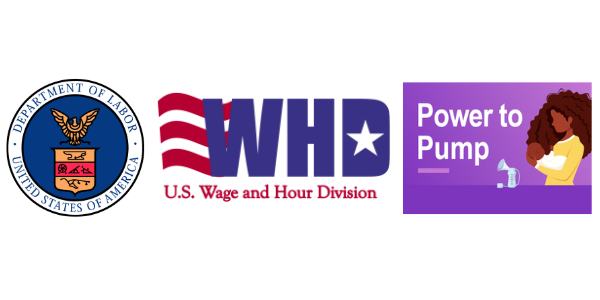
The campaign will focus on reaching employers, new and expecting parents, and workers in industries largely affected by the changes. The agency’s outreach to employers includes confidential PUMP Act compliance assistance via the agency’s toll-free helpline at 866-4US-WAGE (487-9243), a pre-recorded PUMP Act webinar, and other resources on its PUMP Act landing webpage. In its press release announcing the campaign, the WHD stated that it will host webinars for agriculture workers in September, retail and restaurant workers in October, care workers in November, teachers in December, and transportation workers in January 2024. WHD Principal Deputy Administrator Jessica Looman also wrote a blog to correspond with the campaign announcement.
Looking Ahead:
Upcoming Date Reminders
June 2023: U.S. DOL WHD’s current target date (now overdue) to publish its Final Rule on Nondisplacement of Qualified Workers Under Service Contracts (RIN: 1235-AA42)
June 2023: U.S. DOL WHD’s current target date (now overdue) for its Final Rule on Updating the Davis-Bacon and Related Acts Regulations (RIN: 1235-AA40)
June 2023: U.S. OSHA’s current target date (now overdue) to publish its Final Rule on Occupational Exposure to COVID-19 in Healthcare Settings (RIN: 1218-AD36)
Friday, August 11, 2023: Comments due on the EEOC’s proposal to extend – without change – the Information Collection Requirement (“ICR”) for the ADEA/OWBPA third-party waiver and disclosure requirements
Friday, August 11, 2023: Deadline for Presenter Proposal Submissions for DEAMcon 2024
NEW Wednesday, August 23, 2023 (2:00 pm ET): DirectEmployers/USCIS Webinar on 2023 Revised Form I-9
Monday, August 28, 2023: Employers required to file Form LM-10 (union “persuader reports”) must begin using revised version of the form
August 2023: U.S. DOL WHD’s current target date for its Final Rule on Employee or Independent Contractor Classification Under the Fair Labor Standards Act (RIN: 1235-AA43)
August 2023: U.S. DOL WHD’s current target date for its Notice of Proposed Rulemaking on Defining and Delimiting the Exemptions for Executive, Administrative, Professional, Outside Sales and Computer Employees (RIN: 1235-AA39) (The WHD submitted this proposal to the OMB on July 12, 2023)
August 2023: U.S. NLRB’s target date for its Direct Final Rule on Quickie Election Procedures (RIN: 3142-AA18)
August 2023: U.S. NLRB’s current target date for its Final Rule on Standard for Determining Joint-Employer Status (under the NLRA) (RIN: 3142-AA21)
August 2023: U.S. NLRB’s current target date for its Final Election Protection Rule (RIN: 3142-AA22)
August 2023: U.S. DOL’s OASAM’s current target date to publish Proposed Rule on “Revision of the Regulations Implementing Section 188 of the Workforce Innovation and Opportunity Act (WIOA) to Clarify Nondiscrimination and Equal Opportunity Requirements and Obligations Related to Sex” (RIN: 1291-AA44)
NEW Tuesday, September 5, 2023: OFCCP’s Final Rule on “Pre-Enforcement Notice & Conciliation Procedures” takes effect
Tuesday, September 19, 2023: Comments due on the Office of Personnel Management’s Proposed Rule – “Recruitment and Selection Through Competitive Examination, and Employment in the Excepted Service (Rule of Many)”
NEW Saturday, September 30, 2023: 2023 VETS-4212 filing deadline – the reporting cycle began on Tuesday, August 1, 2023
NEW Monday, October 2, 2023: Deadline for comments on DHS/ICE’s proposed pilot procedure program & information collection for non-E-Verify participants as to remote I-9 Form document inspections
December 2023: OFCCP’s current target date for its Notice of Proposed Rulemaking to “Modernize” Supply & Service Contractor Regulations (RIN: 1250-AA13)
December 2023: OFCCP’s current target date for its Final Rule on “Technical Amendments” to Update Jurisdictional Thresholds & Remove Gender Assumptive Pronouns (RIN: 1250-AA16)
December 29, 2023: Statutory deadline for EEOC regulations to enforce the Pregnant Workers Fairness Act
Monday, January 1, 2024: U.S. DOL OSHA’s Final Rule Requiring Covered High-Hazard Industry Employers to Electronically Submit Injury & Illness Records Takes Effect
Wednesday, April 3 – Friday, April 5, 2024: DEAMcon24 New Orleans
June 2024: OFCCP’s current target date for its Notice of Proposed Rulemaking to Require Reporting of Subcontractors (RIN: 1250-AA15)
SUBSCRIBE.
Compliance Alerts
Compliance Tips
Week In Review (WIR)
Subscribe to receive alerts, news and updates on all things related to OFCCP compliance as it applies to federal contractors.

